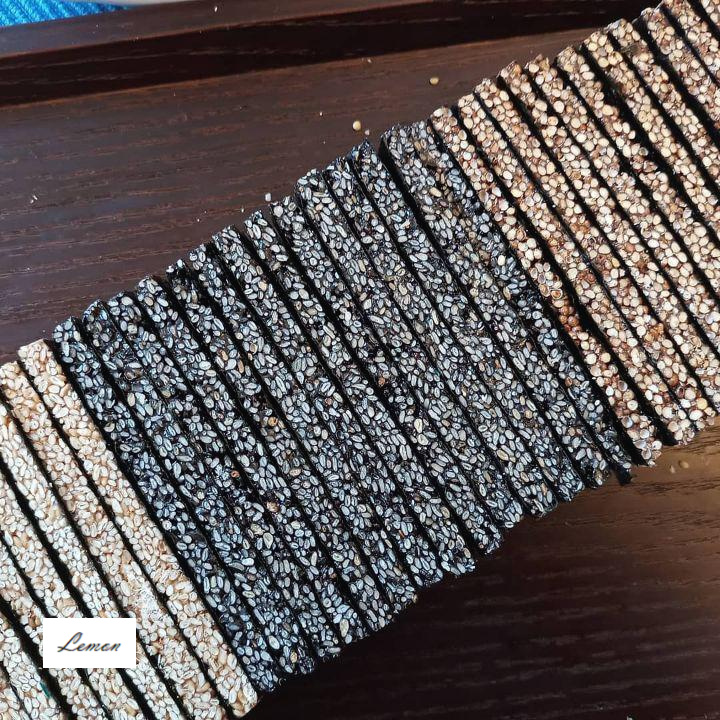Crispy Seaweed Gangjeong
Homemade Snack in Just 10 Minutes! Seaweed Gangjeong

As the cool breeze begins to blow, it’s the perfect season for making traditional Korean snacks at home. Many people find Gangjeong difficult to make, but this Seaweed Gangjeong recipe is incredibly simple, allowing anyone to try it with ease. As the Lunar New Year approaches, prepare a heartfelt gift that’s both delicious and beautiful. Its crispiness and sweetness will bring joy to both the giver and the receiver.
Main Ingredients- 1 cup roasted peanuts or roasted sesame seeds (approx. 150g)
- 100g rice oligosaccharide syrup (or corn syrup)
- 2 sheets of Gimbap seaweed (nori)
Cooking Instructions
Step 1
Any type of nuts will work well for this recipe. Prepare 1 cup, measured by a 245ml cup. I used whole roasted peanuts, but if you’re making this for the first time, finely chopped peanuts are easier to handle as they won’t clump together as much. You can also mix in roasted sesame seeds for added nutty flavor.

Step 2
Lay out the Gimbap seaweed sheets on a clean, flat surface with the smooth side facing down and the slightly rough side facing up. Since you’ll be placing the Gangjeong mixture on top of the seaweed, ensure your workspace is tidy.

Step 3
Pour the 100g of rice oligosaccharide syrup into a frying pan and heat it over medium heat. Once the syrup starts to simmer, reduce the heat slightly and wait until the center begins to bubble actively. Be careful not to let it burn.

Step 4
When the syrup is simmering nicely, add the prepared nuts and stir-fry quickly for about 6-7 seconds. The key is to coat the nuts evenly with the syrup rapidly. Don’t overcook, as the nuts can become too hard. Keep an eye on the time.

Step 5
Immediately spread the nut mixture onto the seaweed while it’s still hot. Use a rubber spatula or a regular spatula to flatten it as quickly and evenly as possible. Spreading it thinly will make it easier to cut later and improve the texture. Then, place the second sheet of seaweed on top, rough side up, so the rough sides of both sheets are facing each other.

Step 6
While the top layer of seaweed is still slightly warm, use a rolling pin to gently press down and even out the entire Gangjeong. Avoid applying too much pressure, as this could tear the seaweed. Pressing gently will help maintain a neat shape.

Step 7
Before the Gangjeong cools down completely and hardens, cut it into desired pieces. It will be much easier to slice while it’s still warm. If it cools too much, it becomes difficult to cut, and if you cut it while too hot, the shape might get distorted. Aim for a temperature where it’s slightly warm to the touch but firm enough to cut cleanly.

Step 8
If you have a box for gifting, measuring its length, width, and height and cutting the Gangjeong to fit will make for a more presentable and professional-looking gift. It will look as if it was custom-made for the box.

Step 9
A heartfelt gift for the holidays is best presented with beautiful wrapping. The Gangjeong in the photo was elegantly wrapped by one of my students. Refer to these beautiful wrapping techniques to captivate the recipient’s heart.

Step 10
A 10-piece wagashi (Japanese confection) box is a suitable size for packaging Gangjeong. The photo shows Gangjeong neatly arranged in a wagashi box and wrapped with a decorative cloth. This wrapping method is included for your reference. Create a thoughtful holiday gift with your homemade Seaweed Gangjeong!




